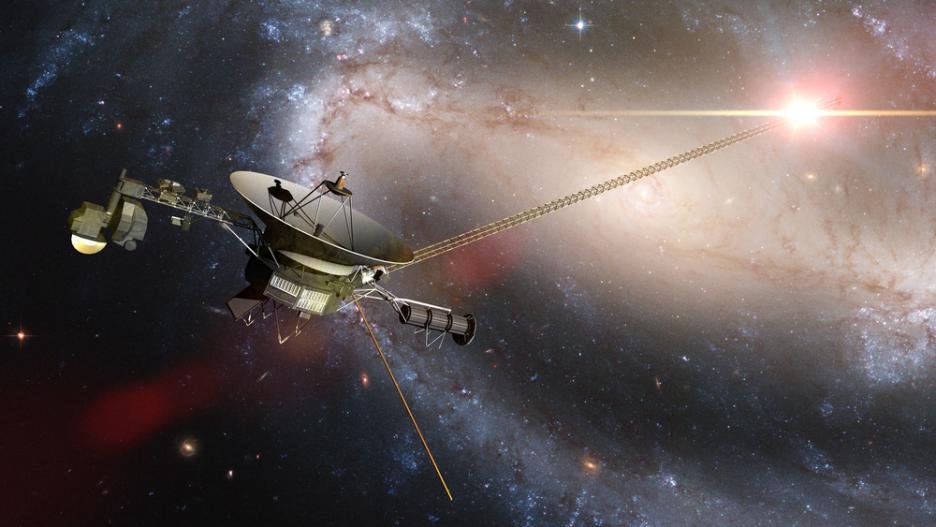
NASA's Voyager 2 spacecraft was launched from a spaceport in Cape Canaveral, Florida, USA, with a Titan IIIE / Centaur rocket launcher.
During the start, a command to turn on the main antenna of the apparatus is not sent due to a ground control error and it is deactivated. Subsequently, however, using the backup antenna, the error is corrected.
Voyager 2 is approaching as far as Jupiter on July 9, 1979, flipping about 570,000 km above the top of the planet's clouds. It passes near Europe and Ganymede, satellites uncharted earlier by Voyager 1. It discovers several planetary rings around Jupiter, as well as volcanic activity of the satellite Io. The volcanic activity of another celestial body has been observed for the first time.
The big red spot is shot as a storm on the surface of the planet that moves counterclockwise. Flashes of other small storms and whirlwinds were observed through the clouds.
The discovery of Io's volcanism is undoubtedly the most unexpected discovery associated with Jupiter. This is the first time that a volcanism of another heavenly body in the Solar System is detected. The two Voyager units observed a total of nine eruptions of Io volcanoes, and there was evidence for others during the time between the two sets.
Europe shows a large number of interesting linear features of Voyager 2 low resolution photos. Scientists believe that these are deep cracks caused by bursting or tectonic movements.
Two new small satellites have been discovered: Adrastheia and Metis, which run just behind the planetary rings. A third new companion, Thebes, is found between the orbits of Almaty and Io.
Closer to Saturn, the apparatus approaches August 25, 1981. His trajectory passes by the satellites Tethida and Enceladus.
Voyager 2 explores Saturn with his radar in order to establish the temperature and density profiles of the planet's atmosphere. In the uppermost atmospheric layers, the pressure reading is 70 millibars at a temperature of 70 K, while at the deepest level, the pressure reaches 1200 mbar at a temperature of 143 K. The temperature of the northern pole is 10 K lower, probably due to seasonal effects.
After Saturn's crossing, the Voyager 2 camera platform is locked briefly, which puts the initial plans to expand the mission to Uranus and Neptune in danger. Fortunately, the mission team has managed to correct the problem of reuse that temporarily consumed the lubricant. The probe continues to Uranus.
On January 24, 1986, the device reached its maximum approximation to Uranus of about 107,000 km. During the migration, 10 new satellites were discovered and atmospheric observations were made. Scientists are studying the nine well-known rings on the planet and discovering two new ones.
Voyager flies 48,000 km from Neptune's surface on Aug. 25, 1989. Since this is the last planet in the program, the trajectory has been altered to closely examine Triton. Upon convergence, the probe leaves the ecliptic.
In Neptune's atmosphere, the Great Dark Spot is discovered, which disappears shortly thereafter, according to observations made with the Hubble Space Telescope. It was originally considered a cloud, but later the view was changed to a hole in a cloud of clouds on the planet.
Since the International Astronomical Union decided in 2006 to lower Pluto into a "dwarf planet," the Neptune flight in 1989 became the moment when each planet of the Solar System was visited by spacecraft at least once.
After the end of the planetary research, Voyager 2 is part of NASA's interstellar mission to establish conditions beyond the heliosphere.
